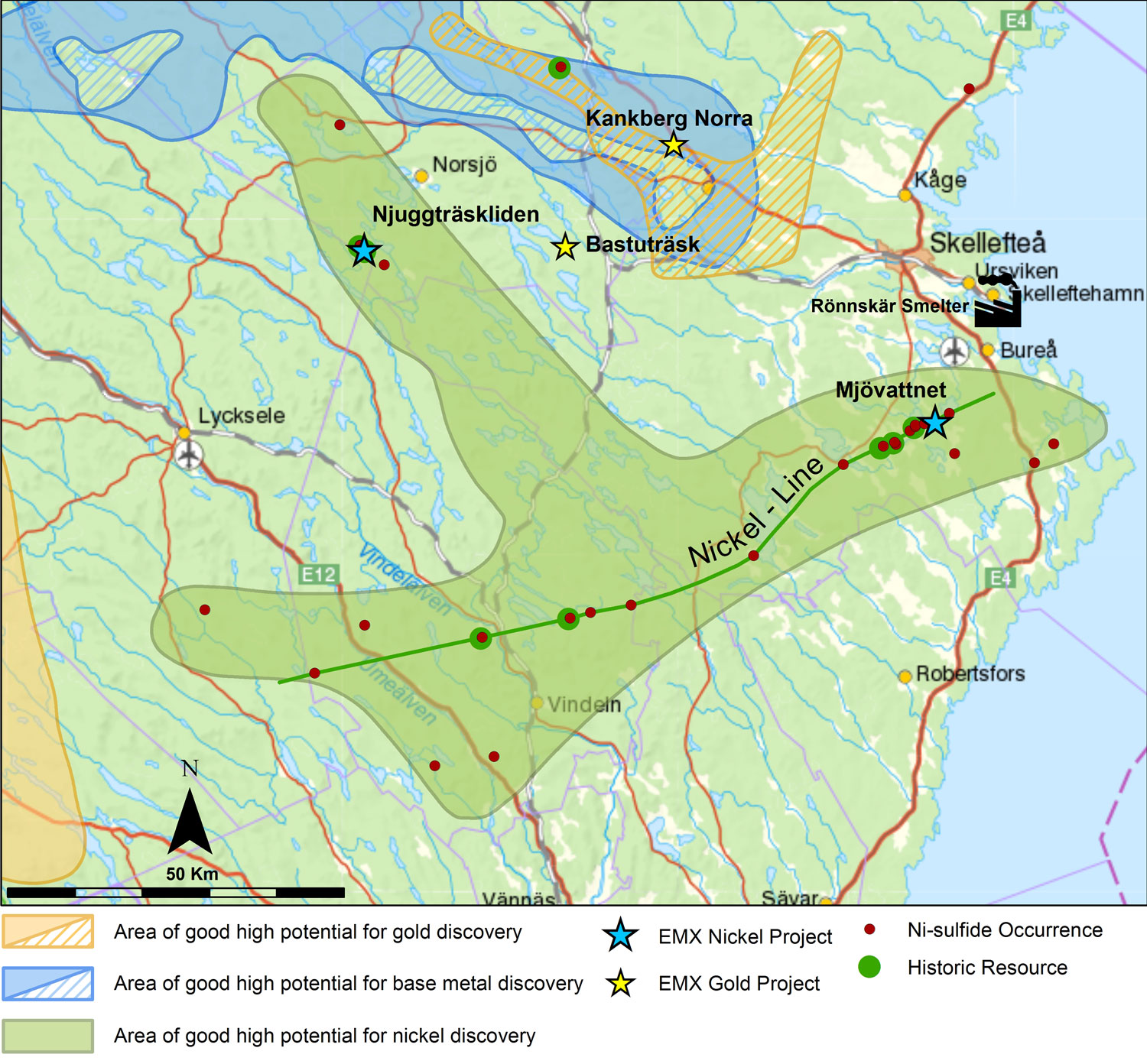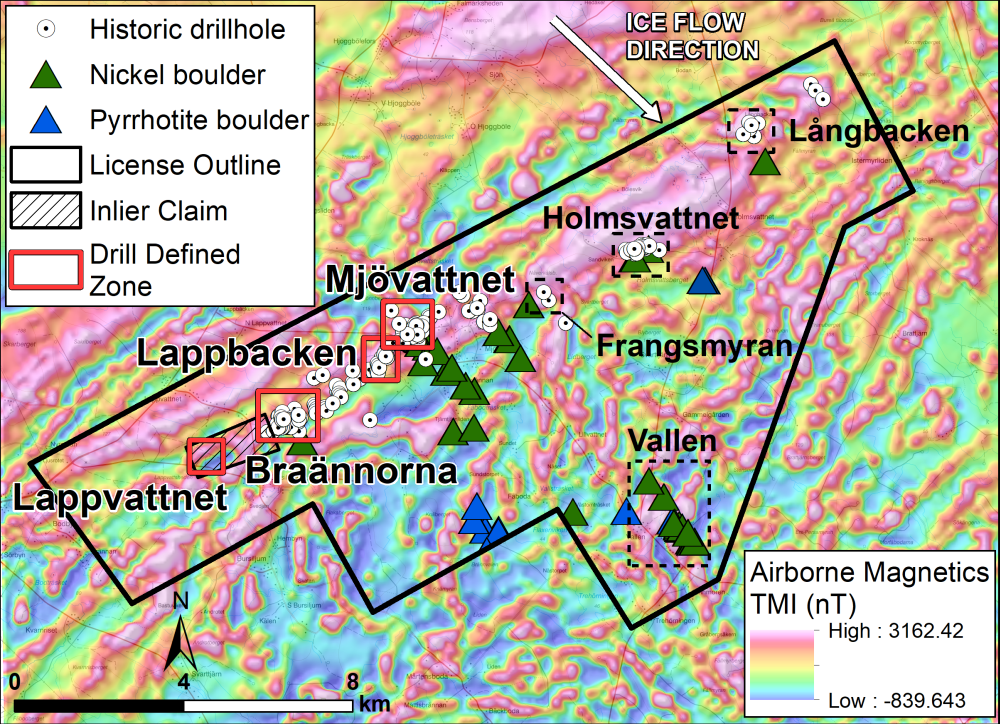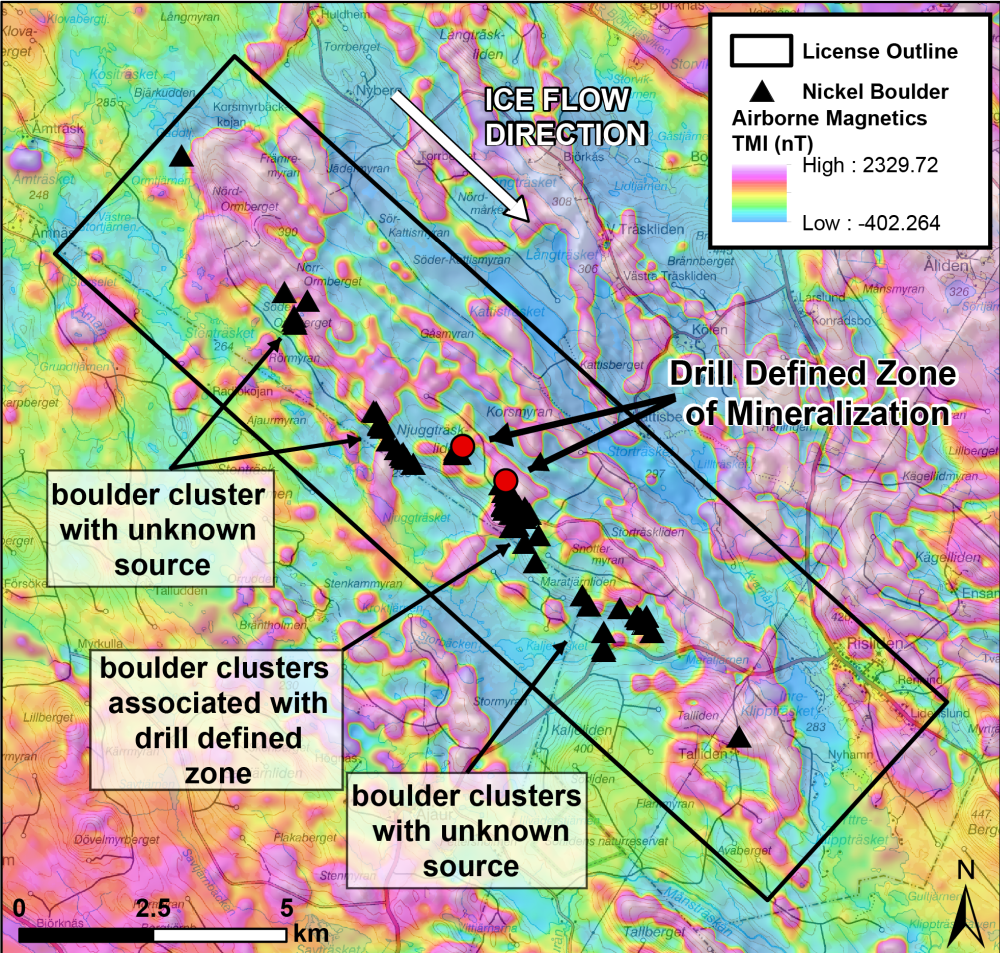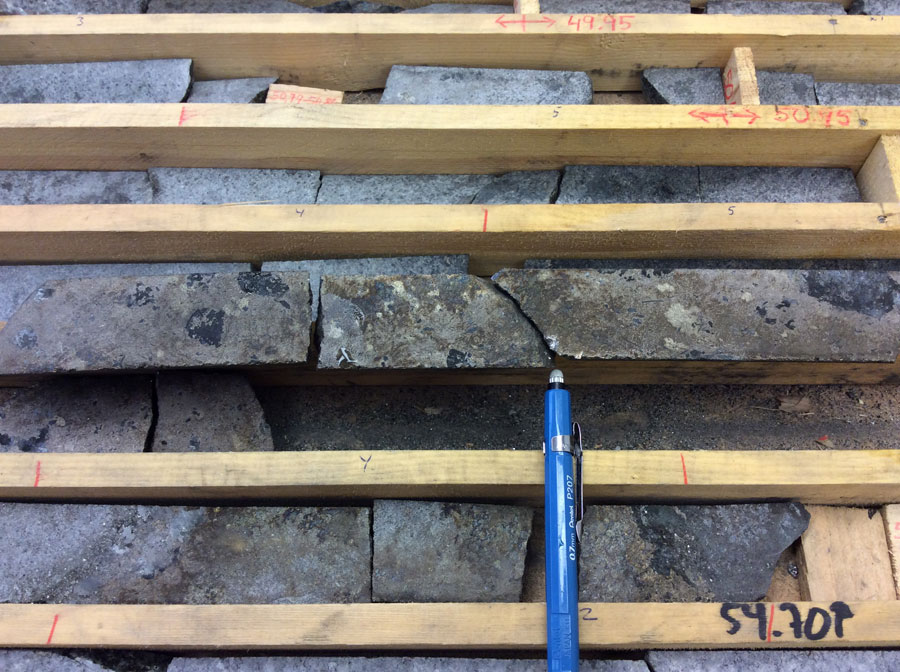Nickel-Line
EMX’s Mjövattnet and Njuggträskliden projects are located in northern Sweden’s southwest of Skellefteå. Regional nickel exploration became a focus of the Swedish Geological Survey (“SGU”) and other state-run mining concerns in the 1970’s and early 1980’s, leading to the discoveries of EMX’s Mjövattnet and Njuggträskliden nickel-copper-cobalt-PGE deposits along what became known as the “Nickel Line” in north central Sweden. These deposits and occurrences are located just outside of the Skellefteå Mining District, where Boliden AB has its regional headquarters and operates a smelting facility.
The Mjövattnet and Njuggträskliden projects were added to an existing arrangement with Kendrick Resources PLC (“Kendrick”), a current EMX partner. Mjövattnet and Njuggträskliden battery metals projects will follow the same schedule of work commitments, advance royalty payments and milestone payments as the Espedalen battery metals project in Norway, another EMX royalty property being advanced by Kendrick. EMX will retain a 3% NSR royalty along with other considerations.
In the past few years, the recent emphasis on conversion to electric vehicles within the European Union and construction of a vehicle battery factory near Skellefteå has resulted in renewed interest in the Nickel Line and its nickel-copper sulfide deposits.
The translation of Mjövattnet is “mead water” in English, which was one of the first nickel sulfide discoveries made along the Nickel Line. Discovered in 1971, the Mjövattnet nickel sulfide deposit occurs along a structural corridor of similar mineralized bodies, including the Lappvattnet Brannorna, and Lappbacken zones to the southwest, each of which have drill defined zones of mineralization, with the latter two also lying within the EMX license (Lappvattnet is currently held by a third party). Notes from the Swedish Geological Company (“NSG”) in 1987 state that Mjövattnet has only been partly explored and its depth potential remains unknown . Likewise, several clusters of nickel sulfide bearing boulders lie to the northeast and southeast (the Frangsmyran, Holmsvattnet, Långbacken and Vallen occurrences), the bedrock sources of which have yet to be identified.
This combination of drill defined nickel sulfide mineralization, which remains open in multiple directions, and the upside potential near the clusters of mineralized boulders makes the Mjövattnet project particularly attractive for further exploration.
Njuggträskliden Project. This deposit was discovered in the early 1970’s via boulder tracing, which led to the identification of several mineralized outcrops. Multiple drill defined zones of nickel sulfide mineralization were delineated in the early 1980’s, many of which were recognized as being enriched in PGE’s, but only some of the collected drill core samples were analyzed for PGE’s.
The drill defined zones of mineralization at Njuggträskliden remain open at depth, and the NSG noted in their summary report that a 10 kilometer corridor of similar boulder clusters with nickel sulfide mineralization remains to be explored at Njuggträskliden1. These occurrences all lie within the EMX license and represent considerable upside exploration potential. Since being drilled by the NSG, a few smaller companies have conducted limited exploration in the area, including twinning of some of the historic drill holes and reanalyzing some of the historic drill core for PGE’s. However, little to no systematic exploration has taken place.
1Information from the Geological Survey of Sweden archives in Malå, Sweden: Nickelmineraliseringarna i Njuggtraskliden, published in 1981 as report BRAP 81007.
Note: The nearby mines and deposits in the region provide context for EMX’s Project, but this is not necessarily indicative that the Project hosts similar mineralization.
Maps
Photos
Information from the Geological Survey of Sweden archives in Malå, Sweden; Data shown on map from the Geological Survey of Sweden archives in Malå, Sweden: Summary of results from nickel prospecting; A consulting report published in 1987 as PRAP 87007 by the Prospecting Division of NSG, the Swedish Geological Company.

 Click to Enlarge
Click to Enlarge
 Click to Enlarge
Click to Enlarge
 Click to Enlarge
Click to Enlarge
 Click to Enlarge
Click to Enlarge